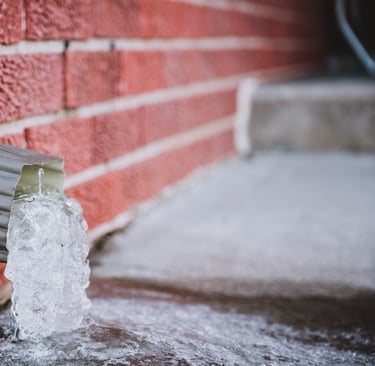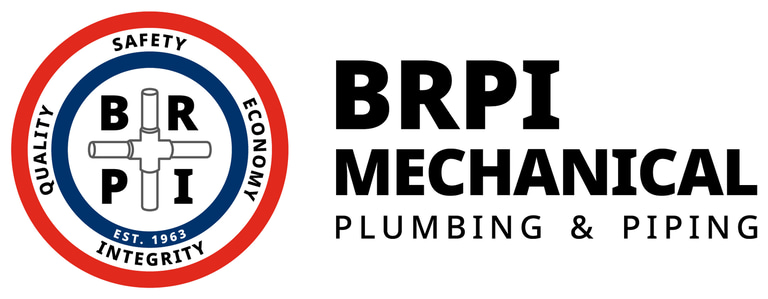Frozen Pipes vs. Clogged Pipes: How to Tell the Difference Before It’s Too Late
WINTER PLUMBINGRESIDENTIAL PLUMBINGPREVENTIVE PLUMBING TIPSDIY PLUMBING FIXES
11/19/20252 min read


The faucet sputters like it’s gasping for life. Your shower barely whispers. Your heart skips a beat. Is this an icy water assassin hiding in your walls, or a slimy clog plotting its next backup attack?
Before you panic and grab a hammer, let’s break it down. Recognizing the culprit fast can save your home, your sanity, and your weekend.
🥶 Frozen Pipes: The Silent Ice Assassin
Picture this: a bitter night in Utah. Pipes in your garage, crawlspace, or attic freeze in slow motion. Ice creeps through copper like a ninja, blocking every drop of water. If left unchecked, these frozen pipes can explode without warning.
Here's how to know if your pipes are plotting against you:
No water or a tiny trickle – your faucet is choking on ice.
Frost or condensation – it’s not magic; it’s frozen water waiting to destroy your day.
Knocks, pops, and gurgles – sounds like your house is alive… it’s not, it’s ice expanding.
Icy touch – if the pipe is freezing cold, it’s probably frozen solid.
This isn’t a minor inconvenience. Ice in pipes can turn into a flood in minutes once it starts to melt.
🚫 Clogged Pipes: The Slow-Motion Saboteur
Clogs are sneaky, messy, and frustrating. They don’t scream “danger” like frozen pipes, but they silently sabotage your plumbing.
Slow drains – water moves like molasses.
Gurgles and bubbles – spooky noises from drains as debris fights back.
Gross smells – like something died, but really it’s soap, hair, and grease rotting in your pipes.
Localized chaos – usually one sink or toilet rebels, unlike frozen pipes which can take down multiple fixtures.
Clogs are sneaky, but at least they don’t explode… usually.
🔍 How to Tell Them Apart Before Disaster Strikes
Multiple dry faucets + icy pipes = frozen.
Single slow sink + gurgling + smell = clog.
Sound test: knocking/popping = ice. Bubbling/gurgling = debris.
Touch test: frozen = frigid; clog = normal temperature.
Spotting the villain fast is the difference between a minor inconvenience and a catastrophic mess.
⚡ Quick DIY Moves Without Losing Your Mind
Before calling a plumber, do this:
Touch test: Cold + frost = frozen. Slow but normal temp = clog.
Check multiple faucets: Multiple dry faucets = ice. One slow sink = debris.
Drain inspection: Standing water screams “clog.”
Do NOT use fire. Hair dryers, space heaters, or heating pads only. One spark can ruin your house faster than frozen pipes ever could.
❄️ How to Handle Frozen Pipes Like a Pro
Shut off your main water valve—stop the ticking bomb.
Warm pipes gradually, starting at the faucet.
Keep faucets dripping to let the ice escape.
Insulate afterward to prevent a sequel.
If the ice doesn’t budge or pipes are inaccessible, call a plumber. Small ice can become a flooding nightmare in minutes.
🌀 How to Handle Clogs Like a Pro
Plunge strategically—sinks and toilets need different moves.
Snake the drain to remove stubborn debris.
Avoid chemical drain cleaners—they’ll harm your pipes faster than a clog.
Prevent future clogs: no grease, hair, or food down drains.
Persistent clogs? A professional inspection may reveal a deeper issue.
🛡️ Prevention: Stay One Step Ahead
Insulate exposed pipes.
Let faucets drip in extreme cold.
Keep drains clean.
Schedule yearly inspections.
A little preparation today prevents a soaked, chaotic tomorrow.
💥 Don’t Wait—Act Fast
Frozen pipes and clogs are sneaky enemies. ❄️🚿 Knowing the signs, acting fast, and stopping trouble before it spreads keeps water flowing—and keeps your home dry, safe, and headache-free. The clock is ticking; catch the culprit before it’s too late.
Contact
Main Office
Social
3560 S 2200 W
West Valley City, UT 84119
P.O. Box 25123
Salt Lake City, UT 84125
Monday – Friday:
7:00 am – 3:30 pm
Billing & Mailing Address
Hours
© Budd M. Rich Plumbing Company, DBA BRPI Mechanical. All rights reserved.
